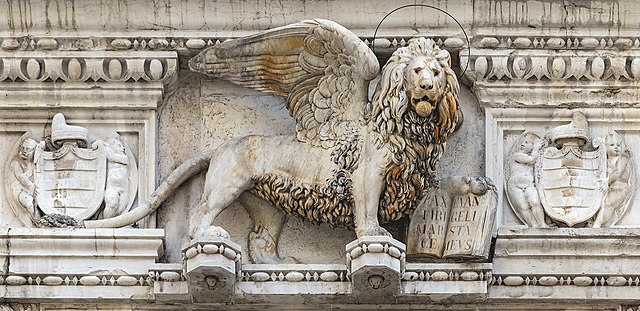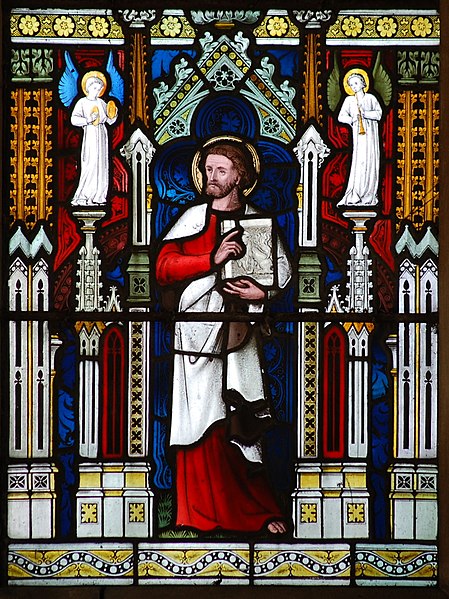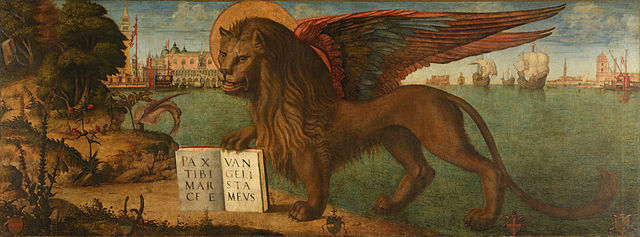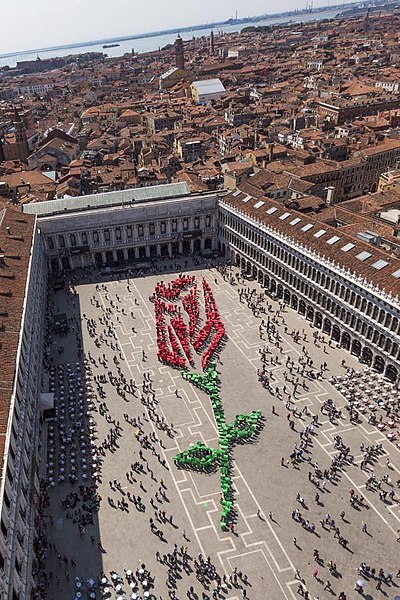The Lion of Saint Mark, representing Mark the Evangelist, pictured in the form of a winged lion, is an aspect of the Tetramorph. On the pinnacle of St Mark's Cathedral he is depicted as holding a Bible, and surmounting a golden lion which is the symbol of the city of Venice and formerly of the Venetian Republic.
The winged lion of St Mark at the Scuola Grande di San Marco, Venice. The open book holds the legend PAX TIBI MARCE EVANGELISTA MEVS (lit. 'Peace unto you, Mark, my Evangelist')
Lion of Venice, Piazza San Marco (Venice)
Medal for the conquest of the Morea by Francesco Morosini
Lion of St. Mark in Othello Castle in Famagusta, Cyprus
Mark the Evangelist also known as John Mark or Saint Mark, is the person who is traditionally ascribed to be the author of the Gospel of Mark. Modern Bible scholars have concluded that the Gospel of Mark was written by an anonymous author rather than an identifiable historical figure. According to Church tradition, Mark founded the episcopal see of Alexandria, which was one of the five most important sees of early Christianity. His feast day is celebrated on April 25, and his symbol is the winged lion.
Detail from a window in the parish church of SS Mary and Lambert, Stonham Aspal, Suffolk, with stained glass representing St Mark the Evangelist
Mark the Evangelist's symbol is the winged lion, the Lion of Saint Mark. Inscription: PAX TIBI MARCE EVANGELISTA MEVS ('peace be upon you, Mark, my evangelist'). The same lion is also the symbol of Venice (on illustration).
Festa del bocoło (rosebud festival) in St Mark's Square, Venice (Italy)
Venetian merchants with the help of two Greek monks take Mark the Evangelist's body to Venice, by Tintoretto








